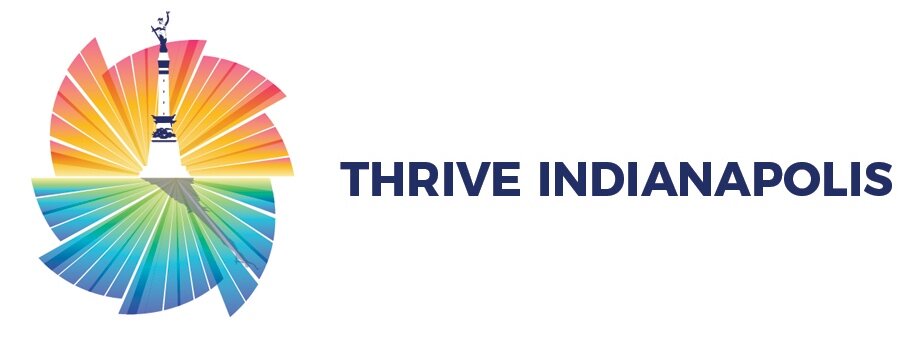Mayor Joe Hogsett Furthers City's Sustainability Efforts with Launch of "Thriving Buildings" Benchmarking Program
The first program of its kind in the state, benchmarking and transparency could reduce local carbon emissions by 27%
INDIANAPOLIS -- This morning, Mayor Joe Hogsett and the City's Office of Sustainability officially launched the Thriving Buildings benchmarking and transparency program in the Indianapolis Central Library's Atrium. Thriving Buildings is the resulting initiative following the City-County Council's passage of the benchmarking and transparency ordinance last summer, bringing with it the potential to significantly reduce utility costs, create jobs, reduce greenhouse gas emissions within the built environment, and improve overall air quality citywide.
"Today, we kick off another one of the Thrive Indianapolis plan's 59 action items: Thriving Buildings," said Mayor Hogsett. "The benefits of utility benchmarking go beyond reducing energy and water usage; it will also create more jobs, driving the creation of local, skilled positions in energy efficiency; it will improve the environmental health of our community; and added efficiencies will lower costs for building tenants and owners alike."
After remarks, Mayor Hogsett presented celebratory pledges to representatives from local organizations that have already committed to benchmarking their buildings during this year's voluntary period. Those organizations included: Newfields, the Indianapolis Airport Authority, the Indiana Convention Center and Lucas Oil Stadium, Keep Indianapolis Beautiful, Finish Line/JD Sports, Indianapolis Hebrew Congregation, Unitarian Universalist Church of Indianapolis, All Souls Unitarian Church, Pepper Construction, and IU Health.
Photos from the event are included below.
"I can’t thank our 2022 participants enough for pledging to benchmark – before they are even legally required to – and participating in Thriving Buildings as we hit the ground running," said Morgan Mickelson, Director of the Indianapolis Office of Sustainability. "These building owners are inspiring positive environmental change within their organizations and modeling sustainable leadership practices for their peers and competitors. They are making our community a cleaner and healthier place to live, work, and thrive."
Benchmarking refers to the tracking of energy and water use of buildings, giving building owners the ability to become more energy efficient, track their progress over time, and cut costs. Transparency refers to the sharing of benchmarking information, such as building scores and building characteristics, to the city and community.
"Like virtually every other important thing government attempts to accomplish, we won't be doing this alone," said City-County Council President Vop Osili. "Public-private partnerships that underpin the Thriving Buildings program offer a model for other cities around the country looking to tackle climate change and provide a roadmap to a future in which Indianapolis sets the bar, or perhaps the benchmark, for an economically and environmentally vibrant community."
During the current phase of the program, only municipal buildings greater than 50,000 square feet are required to comply; it is currently voluntary for all other building types. City officials have already benchmarked 12 city-owned buildings.
Building owners interested in participating in this voluntary phase are encouraged to learn more by attending a virtual "Data Jam" informational session on March 31. These Data Jams will occur monthly through the reporting deadline in June.
"The library's vision is to be a center of knowledge, community life, and innovation for the city of Indianapolis," said Adam Parsons, Director of Facilities for the Indianapolis Public Library. "One of the ways that we feel we can foster that innovation is by leading by example. In support of the ordinance and the Thriving Buildings program, we have already uploaded eight buildings - including Central, two of larger buildings, and all five of our LEED certified buildings - into the ENERGY STAR portfolio manager system. Our goal for 2022 is to get our entire building portfolio into the system by the end of the year."
As a result of Thriving Buildings, the Indy community has the potential - through 2030 - to benefit from:
A 27% reduction in carbon dioxide emissions within the built environment
$77 million in public health savings due to improved air quality
Greater than $194 million in utility bill savings
The creation of 1,400 jobs
Indy joins dozens of peers cities nationwide with similar ordinances and subsequent programs in place, including Columbus, Chicago, and Denver.
The ordinance development process was also supported by the Bloomberg Philanthropies American Cities Climate Challenge. Indianapolis is one of the 25 winning cities in the Climate Challenge, which is helping cities set and surpass ambitious climate goals by ramping up action in the two highest emitting sectors in cities: transportation and buildings.
